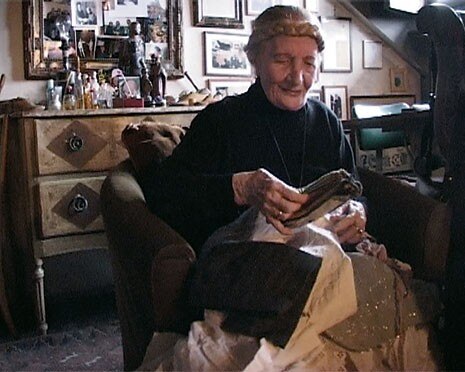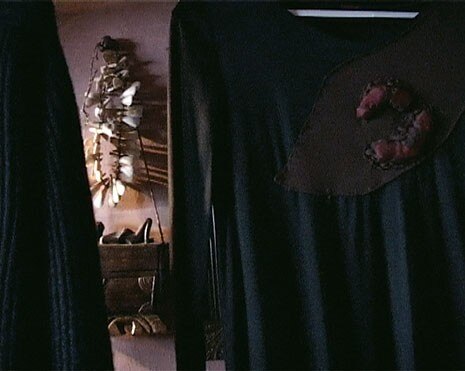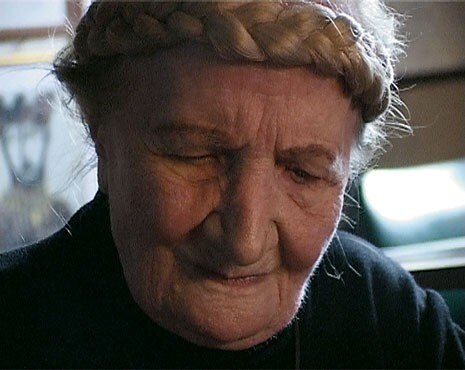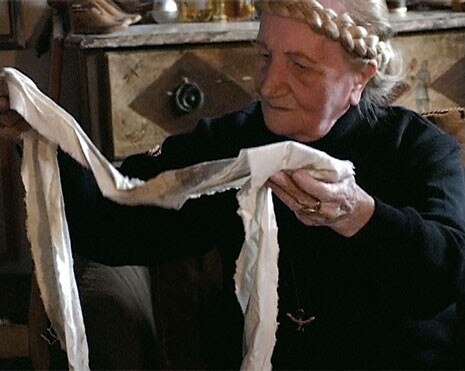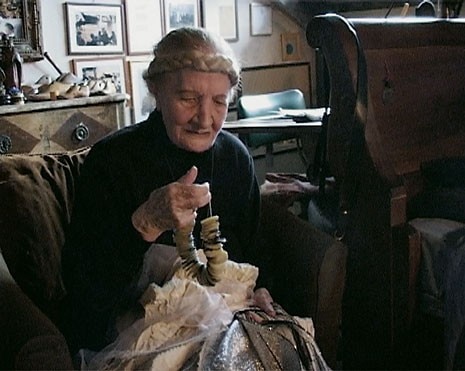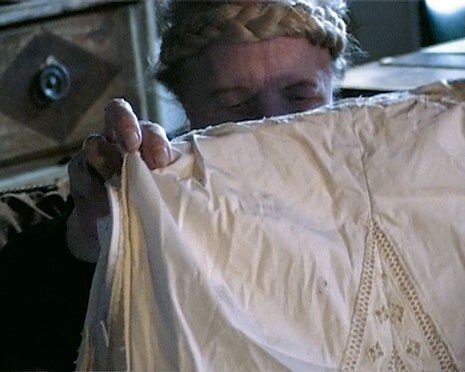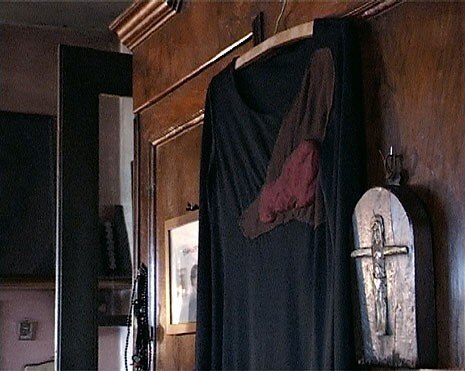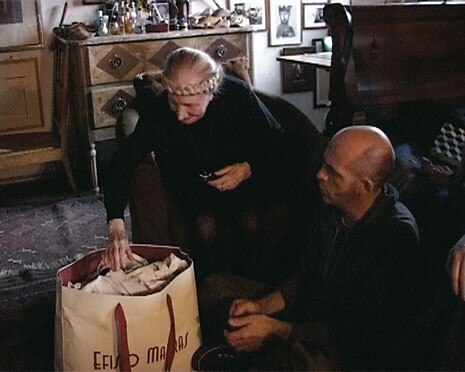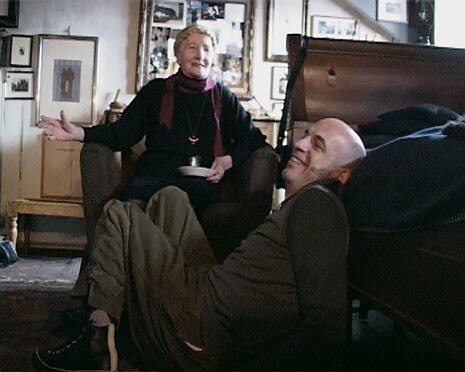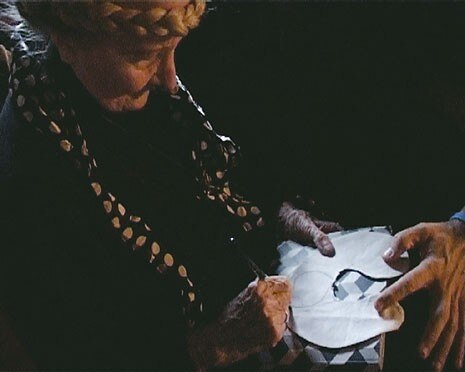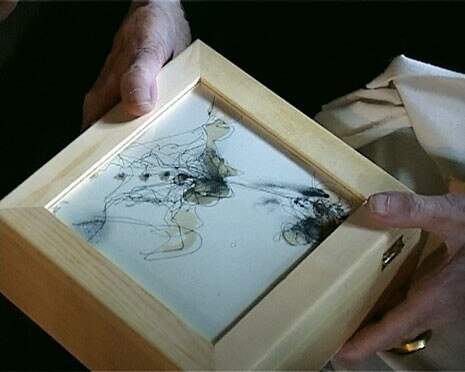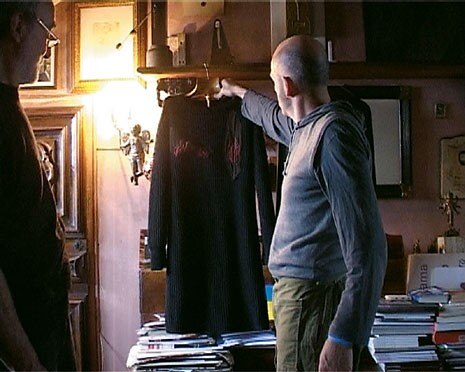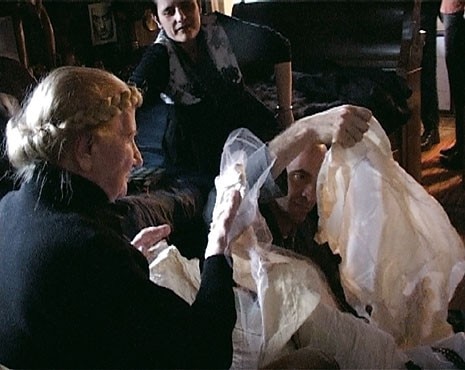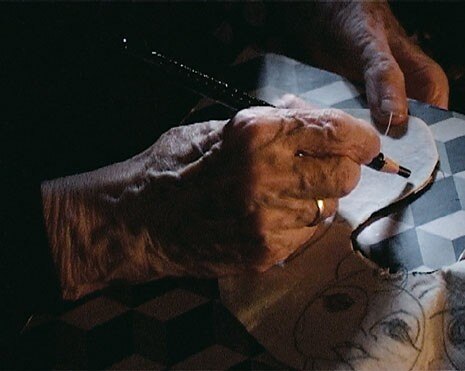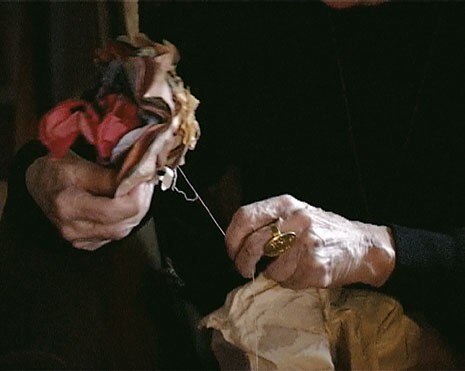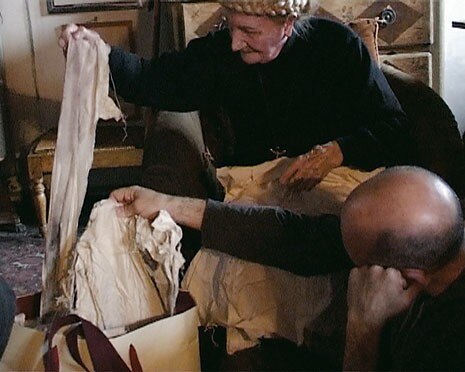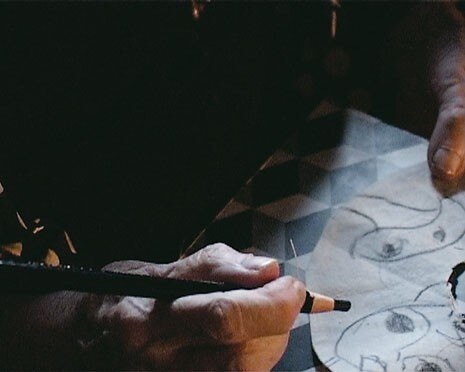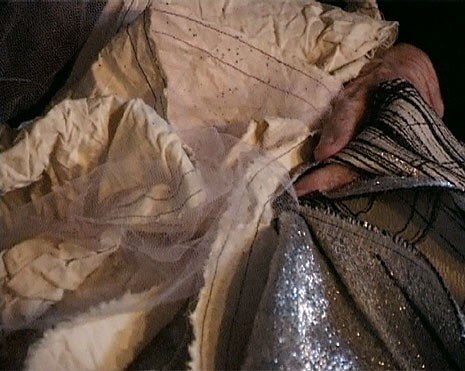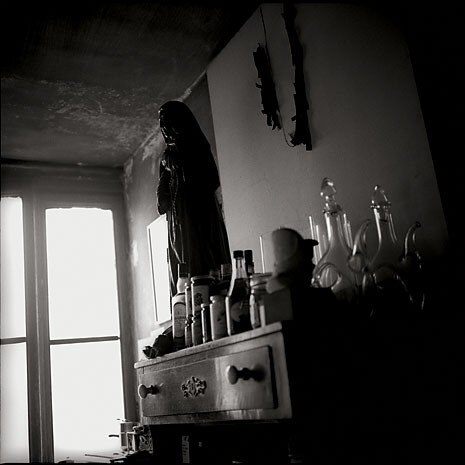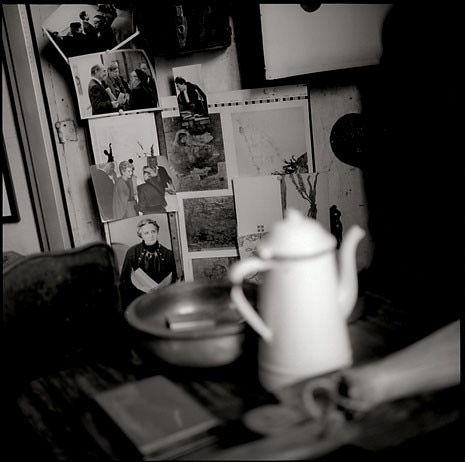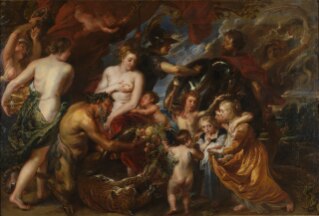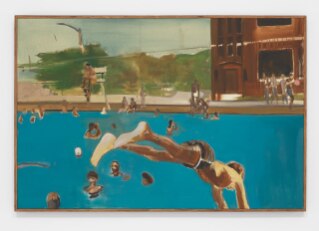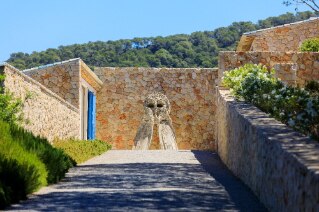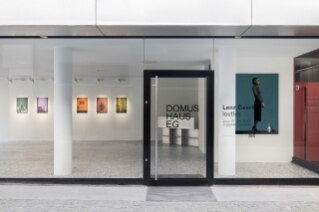Dressing-up games
To understand the parallel between Carol Rama and Antonio Marras – an artist whose eccentric career covers a long stretch of the 20th century, and a 40-year old fashion designer who treats fashion as a meeting ground for diverse disciplines – one should see their homes. Rama’s studio-home in Turin is a jewel case of accumulated memories, where every addition seems effortlessly sedimented. African carvings, shoe lasts, bits of soap and dolls’ heads; and indefinable tools (of a carpenter, a dentist?), united only by their material (old wood, old iron) and dark colour; and photos of her and her friends, from Casorati to Mollino, from Sanguineti to Warhol.
The resulting composition has found its order in time, its tone register in the dark grey of her never repainted walls, defended against natural light by chained shutters. The formal order of her studio, of the kind that governs Rama’s work, springs from the body to arrive at an equilibrium more “experienced” than rationally crafted. Marras’s house in Alghero appears to be at the antipodes: bathed in light instead of nocturnal, open onto the countryside instead of sealed, a collective workshop instead of a place of individual development. But the logic of its spaces is similar.
Here too, there are large numbers of objects, photos, fabrics and clothes, piled up to form a saturated and bizarre, yet familiar setting. Underlying the two is their same attitude to things. Both are attracted by objects that reveal the signs of time and of past lives, which they use as screens to protect their subjectivity, desires, fantasies and fears. Hence Marras’s urge to work on old garments, changing their identity and kind. And Carol’s fascination with certain categories of unprepossessing and outcast objects, such as the dentures and urinals of her early drawings, and later those included in her series of bricolages: examples of a heterodox new dada, with stains of colour and textural crusts clustered around glass eyes, syringes or animals’ claws.
Rediscovering something of himself there, Marras is seduced by the way Carol looks at objects. When he lays out a pile of dress design cuttings (remnants of shirts, underwear, fragments of cloth), she plunges her hands into them and, suddenly serious, begins to consider them one by one, as if they were living things: this is “cruel”, that “makes me shudder”, another scares her. She pounces on the feeling of uneasiness pervading Marras’s fashion, with its hints of dealings with the past and with death. The shell-house, protective and claustrophobic, coincides for Rama with the stage-home of what, with a word she is fond of, we might call “lived-in”.
Some of her works stem from the domestic scene, or refer back to it. Past-future (1965) is a faded towel, which inscriptions of mathematical formulas and rows of glass eyes transform into a magic parchment, a map charged with apocalyptic premonitions. The realms of ordinariness are imperceptibly transferred into artistic work: the sofa cover is a tapestry, with appliqué motifs on it and a figure with a darting tongue, similar to that of many of her paintings. What covers and protects the body also displays its perturbations.
For Carol, home is a cladding and a self-disguise, a manner of being and appearing. “I believed life was a lovely long fancy dress party,” she told Lea Vergine. “My parents loved singing and acting opera… When I understood that it wasn’t like that, that life was not all Turandot, Don Carlos or Rigoletto, I got very frightened.” But Carol continues to play this game of disguise, consciously practising art and life as self-representation. In her work the exposure of inner pulsations and feelings coexists with an explicit desire for disguise. Some of the clothes that she stitched for herself in the ‘70s made a parade of what is ordinarily kept hidden. The “wedding dresses”, as she ironically calls them, are black tunics with red vulvas standing out on them like wounds, created by applying fabric in relief.
“I wanted to wear it (the fanny) as a special page so I could look more appealing, because I had always been afraid of not having much appeal.” Bataille would have something to say about this idea of wearing the fanny as a jewel. So the laying bare is always also a set, a form of theatre, where the “laying bare” is not synonymous with plain and unadorned – on the contrary. The flowered crown that rests on the forehead of the characters in her watercolours (reminiscent of her mother who, ill in hospital, “sang with chains of flowers on her head”) speaks volumes.
It is both the leafy crown of the bacchant, the poet’s laurel wreath, and the figurative equivalent of her own plaited fair hair. Whether or not that plaited hairstyle, meant to make her image unmistakable, was suggested to her in the ‘70s by Man Ray is unimportant. It is hard today to resist the temptation to read it as a clue to her capacity to slip from reality to representation, from everyday prose to the poetry of an always slightly outlandish pretence. Giuliana Altea
Olga Carolina Rama was born in Turin in 1918. She began painting in the early 1930s, not through “regular” studies but by mixing assiduously with Felice Casorati and his studio, an artists’ clique. After joining the abstraction of the Movimento Arte Concreta she moved back to the figurative. In 2003 the 50th Venice Biennale awarded her the Leone d’Oro.
Antonio Marras was born in 1961 in Alghero, where he lives and works. As a child he got to know cloths and fabrics in his father’s shop. In 2003 he was named art director of Kenzo’s women’s fashion line. In the same year, with Maria Lai in Alghero, he launched the “Trama doppia” series of exhibitions, in which Marras seeks to compare with artists.
